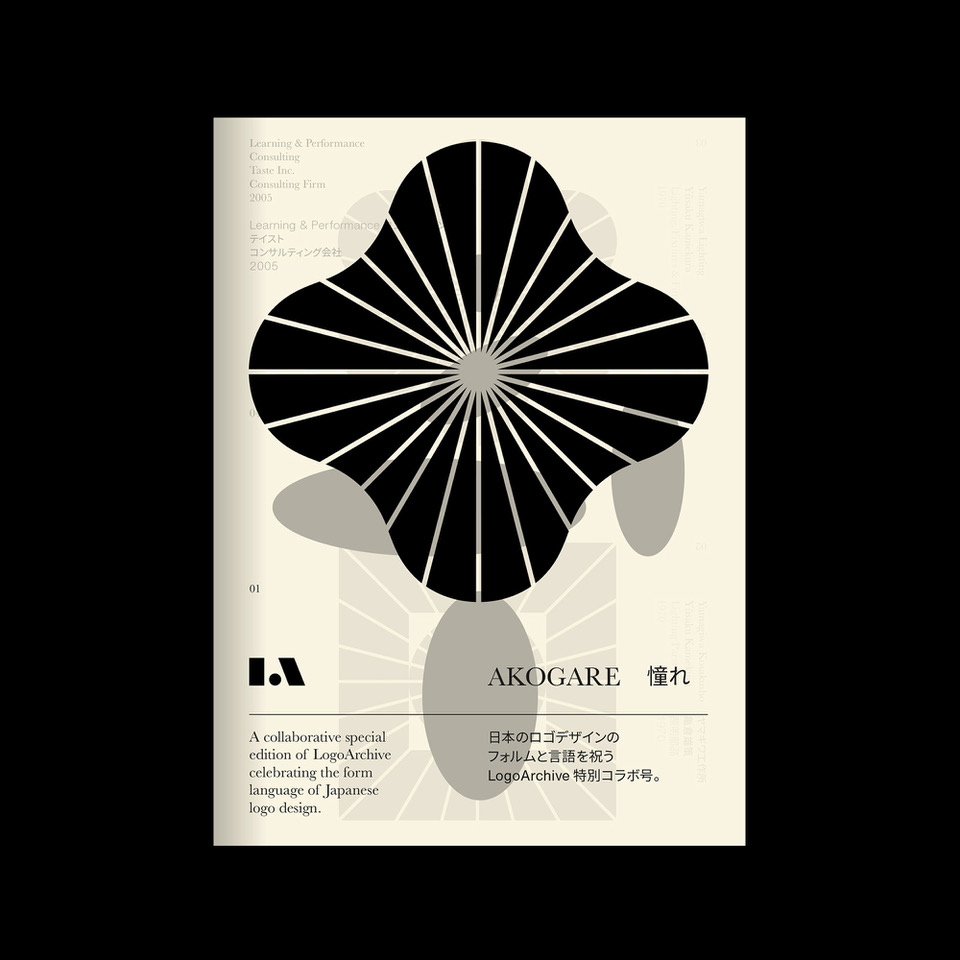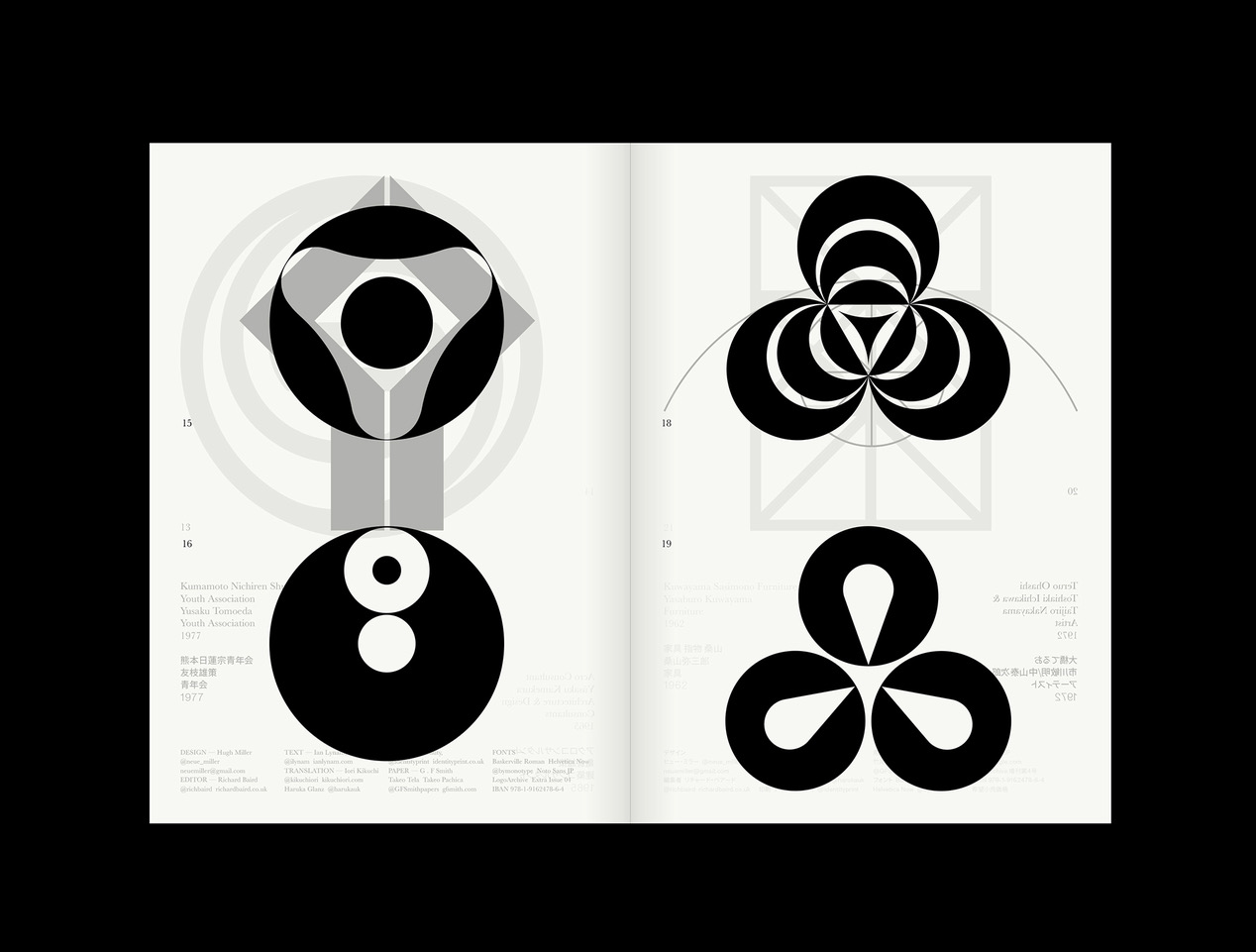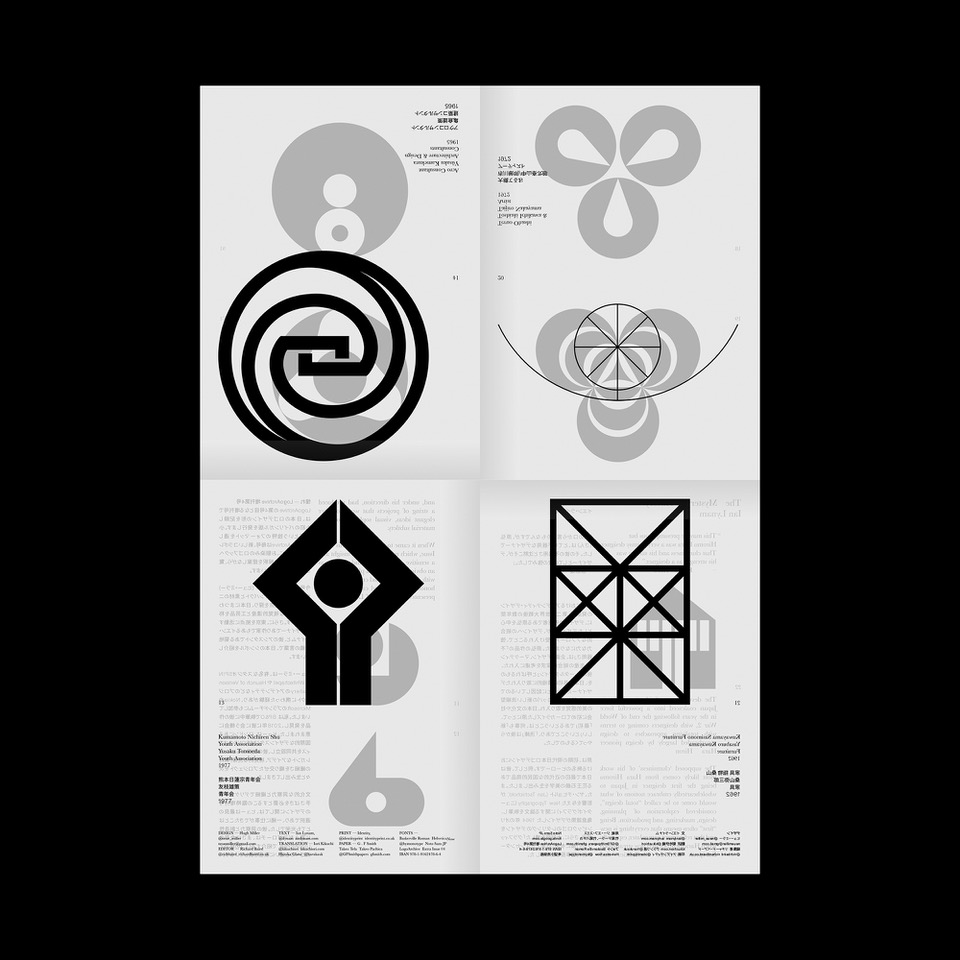
LogoArchive documents the forms, form language and meaning-making that developed out of mid-century modernist identity programs, initially as a Instagram account and then as a series of zines.
This December, LogoArchive returns with its fourth collaborative Extra Issue, and first bi-lingual release, documenting the forms of Japanese logo design.

Through the distinctive smaller format of the bound booklet LogoArchive seeks to surprise and delight with each new issue, introducing new collaborators to offer unexpected interpretations on the ubiquitous logo book. For this Extra Issue, Hugh Miller orchestrates graphic impact and material nuance to honour the unique visual legacy and craft associated with Japan. In addition, the words of Tokyo-based designer and writer Ian Lynam, and his assistant Iori Kikuchi, offer an introduction to Japanese symbols.
Hugh Miller had spent time working at renowned studio SPIN on projects such as the Whitechapel and Haunch of Venison Gallery identity and was embedded into the brand teams of both Nokia and Microsoft. I discovered his work whilst writing for BP&O and had the pleasure of meeting him back in 2018. Hugh had co-founded the London office of international design studio BOND and, under his direction, had produced a string of projects that wove together elegant ideas, visual sophistication and material subtlety. When it came to the design of this Extra Issue, which required a sensitive and delicate hand, Hugh was an obvious choice.

Akogare 憧れ
Akogare, like many Japanese words, is loaded with nuance, and is difficult to translate directly to English. The LogoArchive booklet affords us the chance to better express this through more than just words, to use the culminate effect of words, logos, paper, process and assembly to better express its meaning.
As a starting point, and as I put the idea to Hugh, Akogare could be understood to a Western audience as a deep feeling of respect and admiration one may feel for someone they greatly look up to. Usually this is someone who is far more talented. This feeling of akogare is tinged with the understanding of one’s own shortcomings and the knowledge that the same level of talent is unattainable. This is where the feelings of yearning or longing can come in. This perhaps best describes the feelings evoked in both Hugh and I when working on this LogoArchive Extra Issue. The zine seeks to make concrete abstract concepts, generate an atmosphere and attempts to evoke akogare in its readers as they unfold the booklet.











